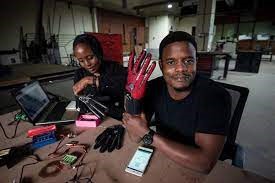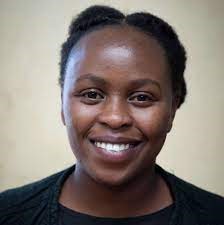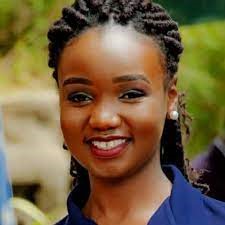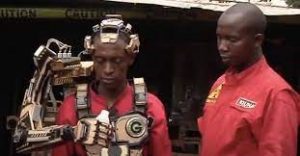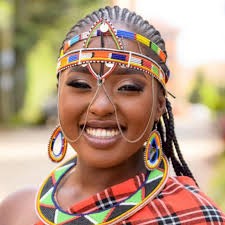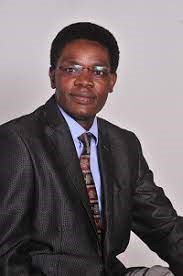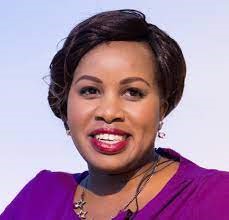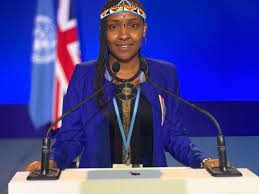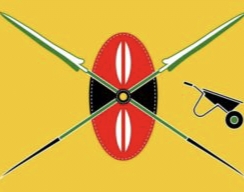Youths want to change the world and are usually aware of issues that affect them and the world, but they are still determining how to proceed.
Young people are fearless, brave, impulsive, dynamic, and self-assured.
Young people have the ideas, creativity, and drive to improve the world. In this piece, African Leadership Magazine reveals a list of young Kenyans who have dared to take their inventions to the global stage.
1. Roy Allela
Roy Allela’s six-year-old niece was deaf from birth. She struggled to communicate with her family, none of whom spoke sign language.
As a result, Allela, a 25-year-old Kenyan technology evangelist who works for Intel and teaches data science at Oxford University, developed intelligent gloves that convert sign language movements into audio speech.
Flex sensors are stitched onto each finger of the Sign-IO gloves. The sensors measure the bend in the fingers and process the signed letter.
The gloves connect via Bluetooth to a mobile phone application developed by Allela, which then vocalizes the letters.
He aims to place at least two pairs of gloves in each special needs school in Kenya, believing that they can help the 34 million children worldwide who have disabling hearing loss.
2. Beth Koigi
Beth Koigi was horrified when she moved into her university dormitory in eastern Kenya and discovered that the tap’s water was filthy and contaminated with bacteria. She built her first filter in months and began selling filters to others.
Therefore, when drought hit in 2016, and water restrictions caused Koigi’s water supply to be cut off completely, she began to consider water scarcity and its relationship to climate change.
During a four-month program at the Silicon Valley-based think tank Singularity University, Koigi, 27, collaborated with two other female colleagues – An environmental scientist from America Anastasia Kaschenko, and a British economist Clare Sewell – to develop Majik Water, which uses solar technology to capture water from the air and convert it into drinking water.
According to Kaschenko, the device, has won the first prize at the EDF Africa awards. This is because it can provide a solution for 1.8 billion people predicted to face a water shortage by 2025, according to the UN.
Majik Water – derived from the Swahili Maji for water and “k” for kuna (harvest) – draws moisture from the air using desiccants such as silica gels. The water is then released by heating the gels with solar power.
The current system can produce up to 10 litres of filtered water per day, and the team hopes to scale it up to 100 litre-system for only £0.08 per 10 litres. According to Koigi, the solar panels used in the prototype are the most expensive component of the device.
3. Collins Oluoch
Collins Oluoch, a Kenyan, was working as a community health worker in Nairobi in 2015, knocking on doors to register children for a national immunization drive.
The work was time-consuming and difficult: each of the volunteers was needed to reach a total number of 200 children, but because some families were at work, out shopping, or had moved away, the targets were not always met.
Oluoch, 27, had to choose between inventing child names to meet the target (as many other health workers were doing) and converting the existing pen-and-paper registration system into a digital database.
He chose the latter and, in 2016, launched Chanjo Plus, an online vaccination platform accessible to health clinics and hospitals across the country.
The database creates a digital identity for each child based on information gathered by community health workers, including when and where vaccinations were administered.
These records can then be accessed by any public health clinic worldwide, making it simple to identify which children are missing immunizations and providing real-time data on vaccination drives.
According to Oluoch, Chanjo Plus has enrolled 10,000 children at three clinics in Nairobi. It plans to scale up with the health ministry to target the 1.5 million children born in Kenya annually.
He hopes it can be used as a platform throughout Sub-Saharan Africa, where one in every five children still lacks access to life-saving vaccines.
4. Sheryl Mboya
Changes inspired MS Sheryl Mboya in environmental deterioration. As a young Kenyan university student, she developed edible plates and cups as an ideal replacement for traditional plastic plates and cups.
She compared her concept to eating ice corn after eating ice cream to a local TV station in Nairobi, Kenya. She believes that the world must act against plastic disasters.
This is in addition to finding a replacement to halt the flow of plastics onto the global market to address the issue of plastic pollution. She maintains her innovation by offering a more inventive and sustainable alternative to plastic consumption and the resulting plastic pollution.
Snack it caters to the latter.
She describes her target market as “every industry that consumes plastics.”
Her idea goes far beyond reducing individual plastic consumption. She hopes that the continent will join her in promoting sustainability in the future.
5. David Gathu and Moses Kinyua
According to the WORLD RECORD ACADEMY, two Kenyan inventors, David Gathu and Moses Kinyua, have created a bio-robotic prosthetic arm controlled by brain signals, which sets a new world record for being the World’s First bio-robotic arm controlled by brain signals.
A “NeuroNode” biopotential headset receiver converts the signals into an electric current. This electrical current is then directed into the robot’s circuitry, allowing the arm to move. The arm is made of various materials, including recycled wood, and can move vertically and horizontally.
He claims that when the virus hit the country, they decided to build a machine to aid in the decontamination of surfaces. It is also suitable for use in schools, restaurants, and hospitals.
They use raw materials from other discarded appliances because we need more space or resources to obtain the necessary materials for mass production.
They have designed numerous technological innovations in recent years, such as a bio-robotic prosthetic arm and a security app, using second-hand parts obtained from old devices.
The sanitizing device, a prototype measuring less than one meter in length, oxidizes oxygen molecules to produce ozone, which acts as a powerful disinfectant.
6. Anita Soina
Anita Soina (born December 24, 1999) [1] is a Kenyan environmentalist passionate about water and climate change in the Maasai community.
She is the author of Green War [1]. She founded the Spice Warriors environmental organization at a younger age of at the age of 18 to help rally youths worldwide and become very conscious with the environment.
Other than this she has also founded The Soina Foundation. The organization aims to address other social issues that deal with sexual reproductive health education, GBV, WASH, and education, among others.
Her efforts have contributed to her being nominated to represent the UK at COP 26, Stockholm plus 50 in Sweden, the Sustainable Energy for All Forum in Rwanda, and COP 27. Anita Soina has been named Global Youth Champion for Sanitation and Water for All for 2023-2024. (SWA).
7. Cosmas Ochieng’
Cosmas is the co-founder and Director of Operations at Eco Fuels Kenya Ltd., a social enterprise dedicated to establishing a sustainable agribusiness industry by producing high-value, renewable energy and organic agricultural inputs.
Eco Fuels has converted the croton nut, an indigenous, inedible East African nut with no commercial use, into clean biofuel, animal feed, and organic fertilizer. Cosmas oversees supply, human resources, and operations at Eco Fuels.
He graduated from the Technical University of Kenya with a Food Science and Technology diploma.
8. Lorna Ruto
Lorna Ruto is a Kenyan ecopreneur and the impressive founder of Eco Post, a nonprofit organization founded to DEVICE alternative waste management solutions to Kenya’s massive plastic waste problem.
She founded her company in 2009, which collects plastic waste and manufactures commercially viable, highly durable, and, most notably, environmentally friendly fencing posts widely used throughout Kenya. Lorna was named Sub-Saharan Africa laureate for the prestigious Cartier Women’s Initiative Awards in 2011.
Lorna has not only given Kenya a commercial alternative to timber, but has also created over 300 jobs, produced much-needed revenue, saved over 250 acres of forest, and removed over 1 million kilograms of plastic waste from the environment. Her efforts have earned her many accolades and awards at home and abroad.
9. Elizabeth Wathuti
Elizabeth Wanjiru Wathuti (born August 1, 1995) is a Kenyan climate and environmental activist and the founder of the Green Generation Initiative, [1] which fosters young people’s love of nature and environmental consciousness at a young age and has planted 30,000 tree seedlings in Kenya.
In 2019, she was titled one of the 100 Most Influential Young Africans by the Africa Youth Awards. In addition, she received the Africa Green Person of the Year Award from the Eleven Eleven Twelve Foundation.
10. Binna Maseno
Binna is a Gender, Governance, and Development Expert. She is also a former journalist and political aspirant. She founded Badili Africa, a nonprofit organization that uses fashion, beauty, and storytelling as political tools to raise awareness about political participation, particularly among young women who are disengaged and disillusioned with politics. Community organizing and mobilizing grassroots women in “Chamas” to influence local development processes in ways that prioritize their and the community’s needs.
They are ending all forms of gender-based violence as a significant deterrent to female participation in political and social-economic process.

